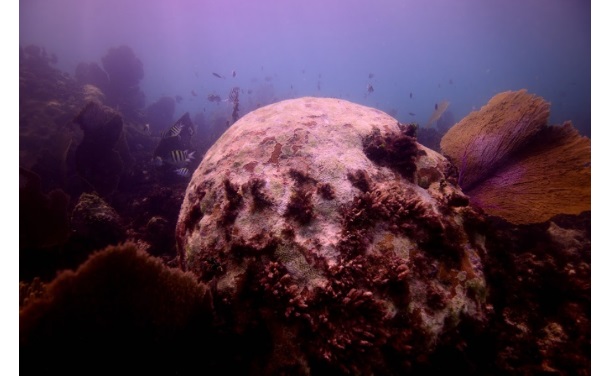“In the short term, the white syndrome could be more catastrophic than the effects of sargassum in terms of economic losses. but especially when it comes to the death of marine animal species“, said marine biologist Nallely Hernández Palacios, deputy director of the National Commission of Natural Protected Areas (Conanp) in the state of Quintana Roo.
She argued that in both cases the marine ecosystem suffers a high degree of degradation: the syndrome is exclusive to corals, while the sargassum reaches seagrasses and mangroves; in addition, when leachate reaches land, it affects the underground system, and then returns to sea, which contributes to strengthen the coral disease.

The expert said that they are already isolating coral colonies in the United States, to be sown after they find the cure against the disease that is killing the reefs of Quintana Roo. The coral reefs are a vital part of the 9.5 billion US dollars per year economic spill, for tourism related activities in the region.
“The picture in the Mexican Caribbean is devastating: in six months the same amount of reefs has died, as in the last 40 years, which corresponds to 30 and up to 60 percent in the most affected areas, we’re looking at a very alarming figure,” she continued.
“The ocean has a different meaning for each person, but it is a source of life for everyone in this Earth. It could be a holiday destination, provider of proteins for human consumption of 151 million tons per year, source of income for the 60 million people who work in the fishing industry worldwide, and a home for millions of marine species, corals amongst them” Hernández Palacios added.

“In three months the white syndrome has killed 90 percent of the coral colonies within Isla Contoy National Park, where the Mesoamerican Reef System (Sistema Arrecifal Mesoamericano) begins, covering more than one thousand kilometers along the coasts of Mexico, Belize, Guatemala and Honduras,” said marine biologist Wilberto Antele Sangabriel, one the National park’s keepers.
He explained that at the beginning of the year they began to register severe effects on two kinds of coral: pseudodiploria strigosa (brain coral) and siderastrea sidereal (round starlet coral), species that are key to protecting marine ecosystems against storms and hurricanes, as well as being a natural habitat for numerous species.
“In a three-month period, we have registered loses of up to 80 or 85 percent, I would even dare to say that there is a mortality of up to 90 percent of live tissue in our reefs,” he continued.
The ravages of this terrible disease have already had their first effects: the temporary closure of three areas in the Arrecifes de Cozumel National Park, where the access to the reefs of Colombia, El Cielo and Palancar was canceled since Monday, October 7th.

The current environmental situation in the Mexican Caribbean is extremely serious and if the authorities of our country do not take the necessary measures to stop this catastrophe, the effects will be devastating and will have an impact on the fishing industry, the tourism sector and the life of all the inhabitants of this planet.
San Miguel Times Newsroom
